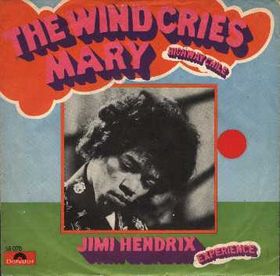 There’s a certain kind of song that doesn’t just play through the speakers—it struts. It leans back, smirks, and oozes so much personality that it practically creates its own mythology. Dion’s “The Wanderer,” released in 1961, is one of those rare tracks that feels alive every single time it comes on. Long before rock singers started cultivating bad-boy personas or writing about the intoxicating freedom of movement and mischief, Dion DiMucci captured the archetype in under three minutes. Even more impressive, he did it with a deceptively upbeat arrangement that makes the song danceable while its lyrics deliver something darker, edgier, and unmistakably streetwise.
There’s a certain kind of song that doesn’t just play through the speakers—it struts. It leans back, smirks, and oozes so much personality that it practically creates its own mythology. Dion’s “The Wanderer,” released in 1961, is one of those rare tracks that feels alive every single time it comes on. Long before rock singers started cultivating bad-boy personas or writing about the intoxicating freedom of movement and mischief, Dion DiMucci captured the archetype in under three minutes. Even more impressive, he did it with a deceptively upbeat arrangement that makes the song danceable while its lyrics deliver something darker, edgier, and unmistakably streetwise.
The early ’60s were filled with doo-wop harmonies, love ballads, and an increasingly polished vision of teen romance, yet Dion slipped a wolf among the lambs. “The Wanderer” is a song about motion, temptation, and emotional detachment. It’s about a man who can’t be contained, who sees commitment as a trap, and who takes pride in a lifestyle that’s both liberating and lonely. What gives the song its power is that Dion doesn’t portray this lifestyle as either glamorous or tragic—he simply presents it as truth. And that truth, set against a stomping beat and swaggering vocal, has kept “The Wanderer” relevant for more than sixty years.
A Song Built on Pure Strut
From the first chord, “The Wanderer” has rhythm in its bones. The guitar has that snappy, driving shuffle that typified early rock and roll, while the handclaps and backing vocals bring a familiar doo-wop texture. But it’s Dion’s vocal delivery that pushes the track into iconic territory. He doesn’t just sing the song—he embodies it. There’s a sly grin in every word, a hint that he knows exactly the kind of trouble he’s talking about and doesn’t regret one second of it.
The song’s structure is deceptively simple. The chords follow a classic progression, one that was used in countless early rock tunes, but the magic here is in the phrasing and rhythmic pulse. Dion punches the consonants with attitude, stretching and snapping lines to make them pop. You can almost see him walking down a city street in 1961, collar popped, hair slicked, hands in pockets, owning the sidewalk.
And while the arrangement is unmistakably feel-good, the lyrics reveal something more nuanced.
A Portrait of a Man Untethered
“The Wanderer” introduces us to someone who moves through the world with no strings attached. The narrator talks about multiple girlfriends in different neighborhoods, each one special but none meaningful enough to keep him in place. This setup could have easily sounded boastful or shallow, but Dion’s delivery makes it more complex.
Lines like “I’m the type of guy who will never settle down” hint at pride, but the follow-up—“I roam from town to town”—carries a sense of isolation. He brags about the women he spends time with, but he also admits he’s always alone at the end of the night. The balance is key: he likes the freedom, but he can’t pretend there isn’t a cost.
This duality is what gives the song its lasting depth. Many listeners hear a lighthearted tale of a carefree ladies’ man, but beneath the swagger is a man who keeps moving because he doesn’t know how to stop. He’s in control, yet also a prisoner of his own restlessness.
Dion later revealed that the song hit close to home. While not entirely autobiographical, it reflected a persona he understood intimately—one foot on the curb, one eye on the horizon, and a heart that doesn’t stay in one place for long.
The Real Story Behind the Song
“The Wanderer” wasn’t originally written for Dion. Composed by Ernie Maresca, it was meant for another singer altogether. But when Dion heard it, he knew immediately that he could bring something special to it—something gritty, something honest. He infused it with a Bronx edge, the kind of charisma you can’t fake.
Dion was already famous thanks to hits like “Runaround Sue,” but “The Wanderer” deepened his musical identity. “Runaround Sue” was a catchy, somewhat comical tale of heartbreak and betrayal. “The Wanderer,” by contrast, expanded his persona into something tougher, more mature, and more rooted in the street culture he grew up with.
Interestingly, the song wasn’t initially expected to be a massive hit. Yet almost immediately after release, it exploded onto the charts. It reached No. 2 on the Billboard Hot 100 and went on to become one of the most recognizable rock and roll singles of the early 1960s.
Part of its success comes from the way it bridges genres. “The Wanderer” is doo-wop, rock, jump blues, and street-corner storytelling all rolled into one. It feels timeless because it doesn’t belong to just one tradition—it carries the DNA of several.
The Wanderer’s Shadow: Influence Across Decades
Look across rock and pop history, and you’ll find “The Wanderer” popping up in the most unexpected places.
The lyrics, with their blend of cockiness and melancholy, became the template for countless rock personas—from Elvis Presley’s cinematic bad boys to Bruce Springsteen’s runaway romantics. There’s a straight line between Dion’s wanderer and the restless drifters who populate Springsteen’s Born to Run. Even later, punk frontmen and garage rock revivalists borrowed the attitude, the looseness, the sense of untamed rebellion.
Musically, the song’s beat and phrasing influenced everything from early British Invasion groups to modern retro-rock bands. Many artists have covered it, including Status Quo, Eddie Rabbitt, Gary Glitter, and even U2, who performed it during certain live sets. Each version brings out a different shade—sometimes grittier, sometimes smoother, sometimes darker—but they all revolve around Dion’s original blueprint.
And then there’s cinema. “The Wanderer” has been used in movies, television shows, and commercials, always to evoke the same mood: cool defiance with a hint of trouble. It’s the musical equivalent of a smirk.
A Character Study Hidden in a Pop Song
What makes “The Wanderer” so special is the way it builds a full character in less than three minutes. Most pop songs at the time were about simple romance or heartbreak. This one introduces us to someone layered, conflicted, and vividly drawn.
Critics often note how the upbeat sound contrasts with the more complicated emotional truth underneath. The narrator isn’t just a player—he’s someone who hides from vulnerability by constantly moving. He doesn’t let anyone get close enough to hurt him, but as a result, he also never experiences real connection.
That contradiction gives the song the emotional weight that’s kept listeners returning to it for decades. As musical storytelling goes, “The Wanderer” is far richer than its cheerful tempo might suggest.
Dion’s Delivery: The Secret Weapon
If another singer had taken on the song, it might’ve been a hit, but it never would have become this iconic. Dion brings an authenticity that’s impossible to replicate.
There’s a lived-in quality to his voice—a mix of bravado and vulnerability that makes you believe every word. When he sings about having girls on every corner, he’s not bragging; he’s simply telling you how it is. When he sings about walking through life alone, you feel the weight despite the bounce of the music.
Dion also understood phrasing better than almost anyone of his generation. He knew when to drag a word, when to snap a syllable, when to lean back and let the band push forward. His vocal is the engine of the song, driving it with effortless cool.
The Cultural Power of Loners and Drifters
Part of why “The Wanderer” remains iconic is that the figure it describes still resonates today. American storytelling—whether in literature, film, or music—has always been fascinated by loners who can’t settle down. From Western cowboys to noir detectives to rock frontmen, the idea of freedom through movement is baked into the culture.
But that freedom almost always comes with emotional distance. “The Wanderer” captures that perfectly. The song’s narrator is free, but he’s also rootless. He’s living the life many fantasize about, yet he’s also missing something he may not even know he wants. This tension keeps the song from ever feeling shallow or dated.
And though the lyrics never explicitly dive into psychology, the subtext is clear: he’s not wandering to anything—he’s wandering from something.
A Song That Never Stops Moving
Sixty-plus years after 1961, “The Wanderer” still sounds energized. Modern remasters emphasize the crispness of the guitar, the punch of the rhythm section, and the warmth of the backing vocals. Played through headphones, it feels surprisingly big for a recording of its era.
More importantly, it still moves people. It’s a staple of oldies playlists, retro dance nights, classic rock radio, and even soundtracks for younger audiences discovering the early roots of rock and roll. The swagger is ageless.
The song also remains a cornerstone of Dion’s career. Though he’s recorded everything from doo-wop to blues to folk-rock, “The Wanderer” stands as the defining moment that cemented him as one of the coolest voices of early rock music.
Final Thoughts: Why “The Wanderer” Still Rules the Road
“The Wanderer” endures because it captures something universal. It’s fun, catchy, and pulsating, but it also carries an emotional truth beneath the surface. It’s a song about confidence and loneliness, freedom and detachment, celebration and avoidance—all wrapped in a rhythm that practically forces you to tap your foot.
Dion crafted one of the great timeless characters in music: a man forever in motion, forever searching, forever running from whatever threatens to tie him down. And even though the song invites you to dance, it also invites you to think.
Some tracks survive because they define a moment. Others survive because they define a feeling. “The Wanderer” does both, and it does so with a grin, a swagger, and a truth that has echoed since 1961.
Long live the king of the sidewalk.


